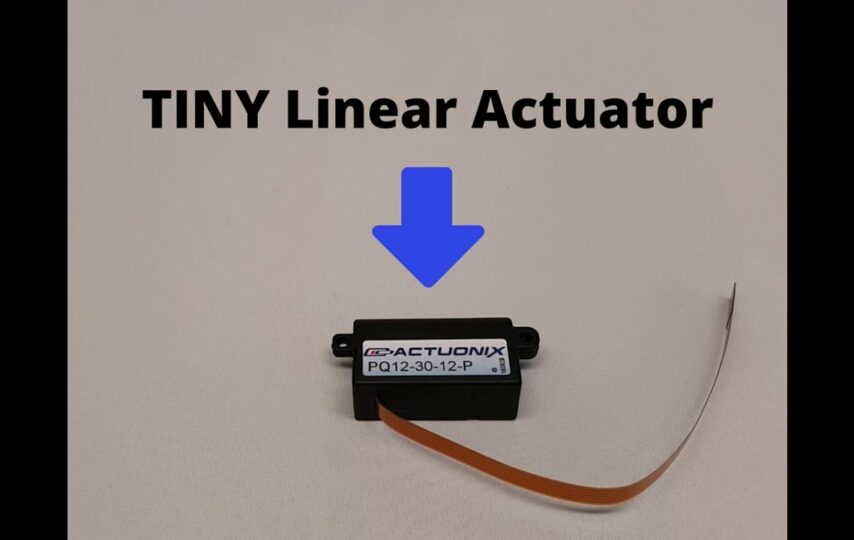Are you looking for miniature linear actuators to power your robotics projects? Whether you are working on an advanced industrial machine or a cutting-edge home automation device, micro linear actuators offer powerful yet compact capabilities that are perfect for situations where every millimetre and every ounce matter.
Robotic advancements have opened up a world of exciting possibilities, and micro linear actuators are its vital part. These tiny motors, capable of delivering massive amounts of force at small scales and with very low power, can push or pull objects with incredible precision. If you want to learn more about some of the best micro linear actuators available today, click on the link https://trustanalytica.com/online/best-micro-linear-actuators and read on to learn more about these impressive tools.
What are Micro Linear Actuators?
Micro linear actuators (MLAs) are motorized devices that have been designed to provide reliable and efficient linear motion in a range of industries, including robotics. MLAs offer a host of advantages over traditional methods of robotic motion, as they allow for higher levels of precision and accuracy.
They can operate in challenging environments due to their high-performance construction. They do not require external energy sources, eliminating the need and cost associated with power sources such as air compressors or pneumatic systems.
MLAs can be tailored to a customer’s specific application requirements through various features like advanced control mechanisms, compact designs, and integrated sensors for enhanced safety. As such, MLAs are crucial for robotic operations across a variety of industries today.
What Are the Different Types of Micro Linear Actuators?
Micro linear actuators come in three main types:
- DC. DC micro linear actuators use electricity to operate and provide feedback on position and velocity. They are driven by electric current, with a motor mounted on the actuator itself. This type of MLA is highly responsive and can provide precise motion over long distances;
- AC. AC micro linear actuators use alternating currents to drive the motor and generate motion. They are ideal for applications where high accuracy and repeatability are required;
- Pneumatic. They use air pressure to generate motion, making them suitable for both indoor and outdoor applications.
Which Micro Linear Actuator is Right for Your Project?
When selecting the best micro linear actuator for your project, keep the following factors in mind:
- Power requirements;
- Load capacity;
- Speed requirements;
- Environmental conditions;
- The size of the actuator (as it will determine how much space it requires for installation);
- Your budget;
- Compare prices from different manufacturers to ensure you get the best value for your money.
Advantages of Micro Linear Actuators
The key benefits of using micro actuators include:
1. Versatility
MLAs serve many robotic applications, from simple movements to complex and intricate tasks. It provides great flexibility in the design of robots, as they can be used in many different configurations.
2. Compact Design
These actuators are extremely small yet highly effective due to their compact sizes and ability to generate high forces with limited space requirements. It makes them ideal for use in confined spaces or where size is an issue.
3. Durability
Robust construction materials and advanced technologies make micro linear actuators incredibly durable and long-lasting components that can withstand harsh environmental conditions, such as dust, moisture, temperature extremes, shocks, and vibrations without any difficulty.
4. High Efficiency
These actuators are designed to be highly efficient, producing more output with less energy consumption than other types of motion systems. It makes them suitable for applications where power consumption needs to be kept low and efficiency is important.
5. Fast Response Time
Micro linear actuators respond quickly to commands, allowing robots to perform faster movements in a shorter period without compromising accuracy or precision.
6. Smooth Motion Control
Their ability to provide smooth motion control makes them ideal for robotics applications that require precise position control or gentle motions such as those used in medical instruments and laboratory automation processes.
7. Noise Reduction
As MLAs do not rely on motors, they operate quietly compared to other types of robotic motion systems. It means that they can be used in noise-sensitive environments without causing any disruption.
8. Low Maintenance
These actuators are highly reliable and require minimal maintenance as they do not need routine lubrication or other procedures to keep them functioning optimally.
9. Cost-Effective
Micro linear actuators are generally less expensive than other robotic motion systems, making them a cost-effective solution for many applications.
10. Safety
The use of micro linear actuators can improve safety in robotics operations by reducing the risk of accidents due to mechanical failure or incorrect operation.Linear actuators are some of the most essential components for robotic design today. However, since different actuation technologies have diverse capabilities, you should understand which type will best suit the desired application. With this understanding, you will be able to develop creative designs that leverage advanced robotics technology while increasing efficiency and performance.








